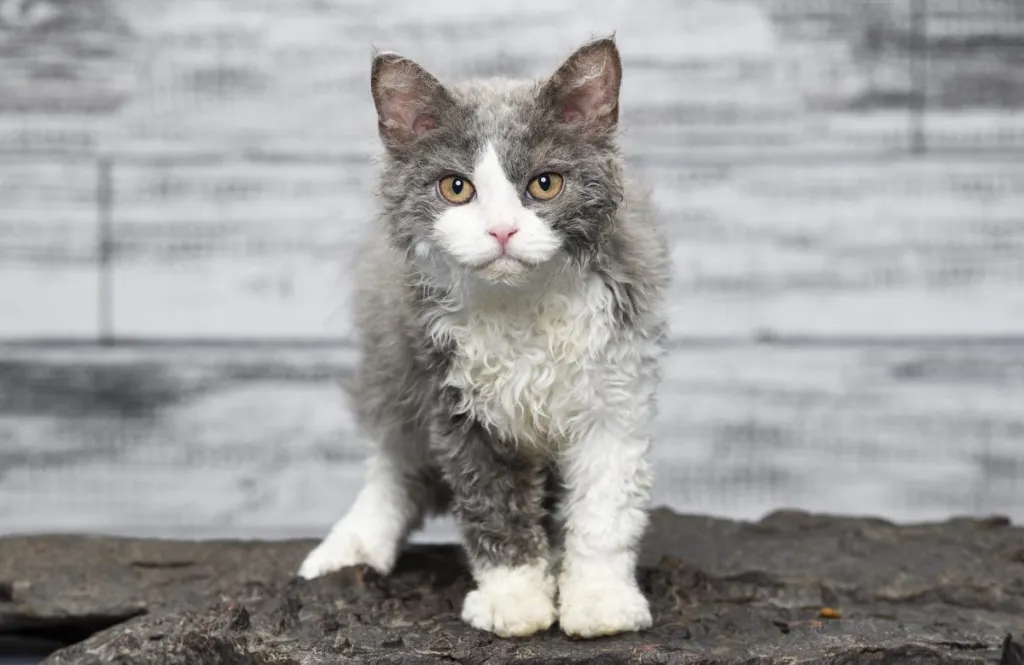The Selkirk Rex is a unique and charming cat breed known for its distinctive curly coat and friendly personality. Tolerant and affectionate, the Selkirk is not always a lap cat, but he likes people and other animals. The most defining feature is its curly coat, which can vary in length from short to long. The curls are soft, plush, and appear all over the body, including the whiskers and eyebrows.
These cats are known for their friendly and affectionate nature. They are social, outgoing, and people-oriented. In summary, these cats are known for their unique and eye-catching curly coat, as well as their friendly and adaptable personalities. If you’re looking for a cat with a distinctive appearance and a loving disposition, the Selkirk Rex might be an excellent choice for your family.
When considering a Selkirk Rex, it’s advisable to prioritize adopting from rescue organizations or shelters to provide a loving home to a cat in need. However, if you decide to purchase, it’s crucial to choose a reputable breeder. Conduct thorough research to ensure that the breeder follows ethical practices and prioritizes the well-being of their cats. Reputable Selkirk Rex breeders prioritize the health and temperament of their cats, conduct necessary health screenings, and provide a nurturing environment for the kitties. This active approach ensures that you bring home a healthy and happy kitty while discouraging unethical breeding practices.
Quick Facts
- Appearance: This is a medium to large breed with a soft, curly coat that can be either short or long. Their coat comes in a wide variety of colors and patterns. They have a round head, large eyes, and a medium-length tail.
- Personality: These cats are known for being gentle, affectionate, and playful. They are also very intelligent and trainable. They make great companions for people of all ages and lifestyles.
- Health: Selkirk Rex cats are generally healthy cats, but they are prone to a few health conditions, such as hypertrophic cardiomyopathy (HCM) and patellar luxation. It is important to have your cat screened for these conditions by a veterinarian.
- Fun facts: The Selkirk Rex is a relatively new breed of cat, having been first developed in the 1980s. The breed is named after Jeri Newman, the breeder who discovered the first Selkirk Rex cat. Selkirk Rex cats are also known for being very good at climbing and jumping.
- Selkirk Rex cats have a unique gene that causes their fur to be curly. This gene is dominant, meaning that even if only one parent is a Selkirk Rex, the kittens have a 50/50 chance of inheriting the curly coat gene.
- This is the only cat breed named after a person, the breeder’s stepfather.
- Pompous Albert is a Selkirk Rex named after Albert Einstein.
Selkirk Rex Pictures
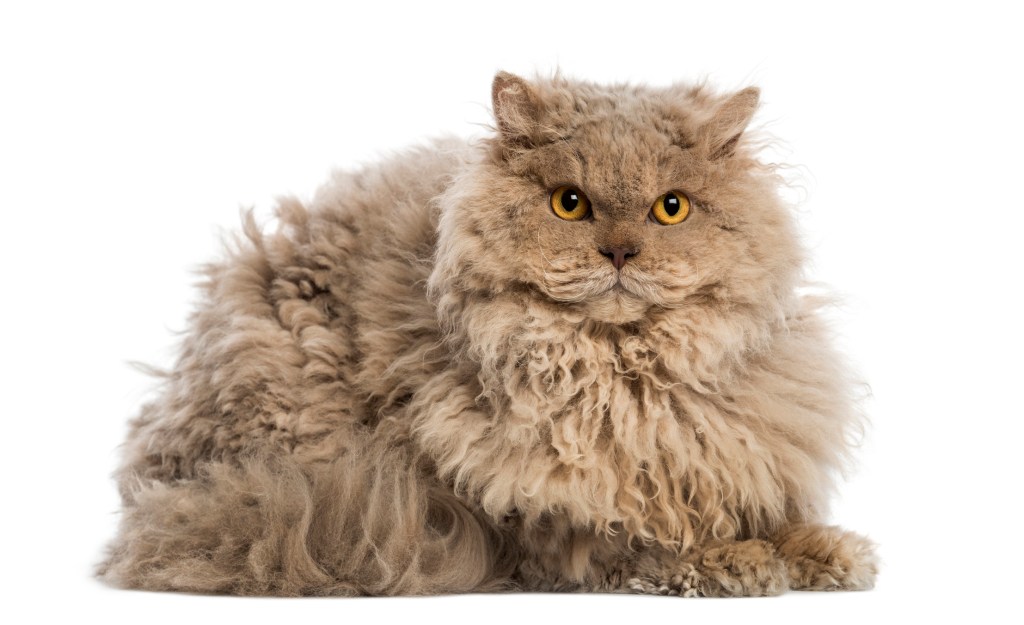
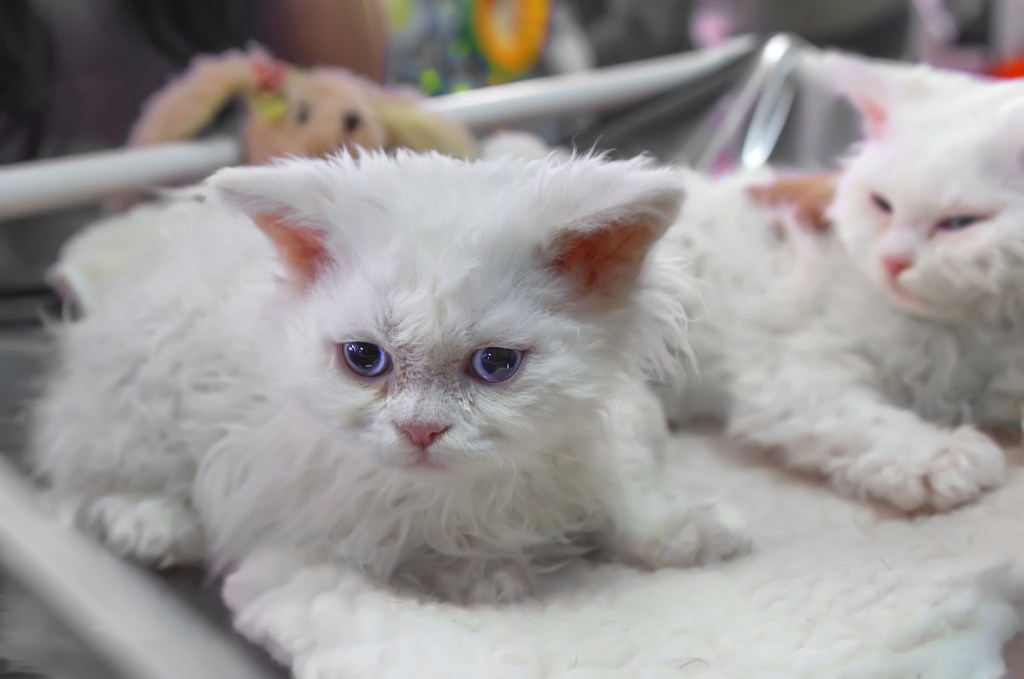
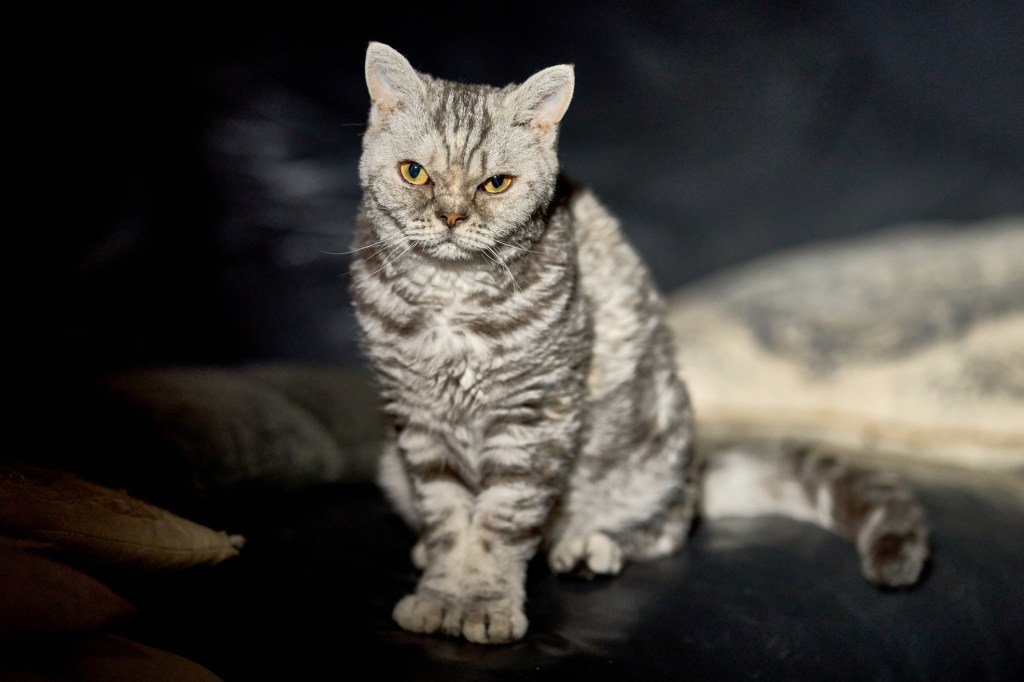
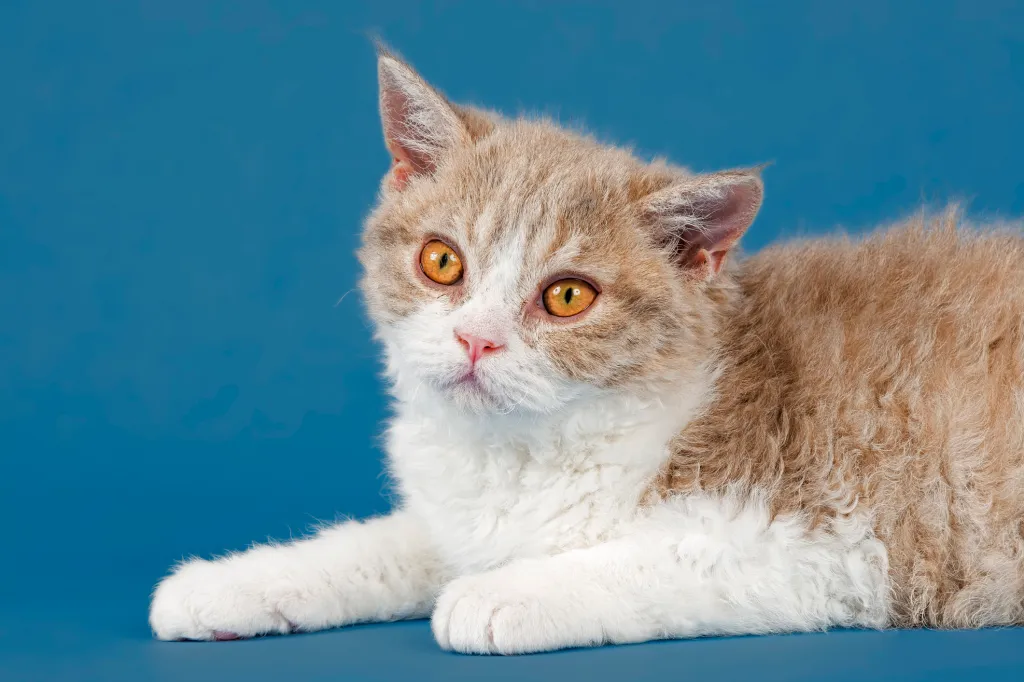
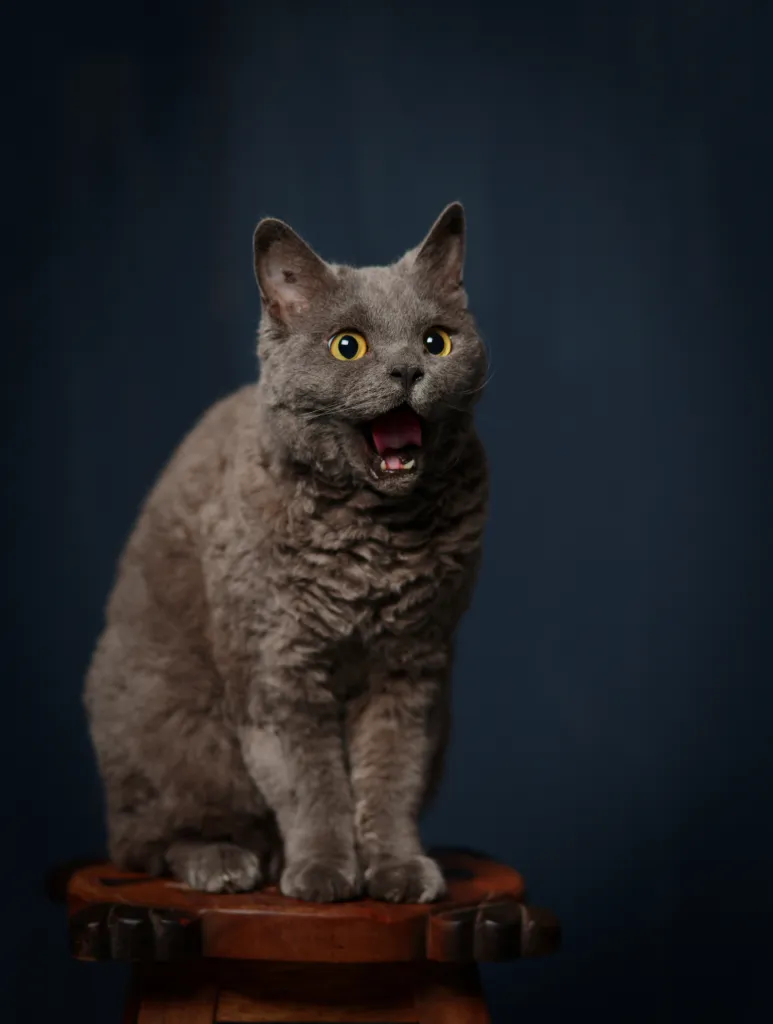
-
Affectionate with Family
Some cat breeds are typically independent and aloof, even if they’ve been raised by the same person since kittenhood; others bond closely to one person and are indifferent to everyone else; and some shower the whole family with affection. Breed isn’t the only factor that goes into affection levels; cats who were raised inside a home with people around feel more comfortable with humans and bond more easily.

See Cats Less Affectionate with Family -
Amount of Shedding
If you’re going to share your home with a cat, you’ll need to deal with some level of cat hair on your clothes and in your house. However, shedding does vary among the breeds. If you’re a neatnik, you’ll need to either pick a low-shedding breed or relax your standards. This furniture cover can make it easier to clean up cat hair and keep it off your sofa!
-
General Health
Due to poor breeding practices, some breeds are prone to certain genetic health problems. This doesn’t mean that every cat of that breed will develop those diseases; it just means that they’re at an increased risk. If you’re looking only for purebred cats or kittens, it’s a good idea to find out which genetic illnesses are common to the breed you’re interested in.
-
Potential for Playfulness
Some cats are perpetual kittens—full of energy and mischief—while others are more serious and sedate. Although a playful kitten sounds endearing, consider how many games of chase the mouse-toy you want to play each day, and whether you have kids or other animals who can stand in as playmates. A classic wand cat toy like this one is perfect for playful felines!
-
Tendency to Vocalize
Some breeds sound off more often than others with meows, yowls, and chattering. When choosing a breed, think about how the cat vocalizes and how often. If constant “conversation” drives you crazy, consider a kitty less likely to chat.
-
Kid-Friendly
Being tolerant of children, sturdy enough to handle the heavy-handed pets and hugs they can dish out, and having a nonchalant attitude toward running, screaming youngsters are all traits that make a kid-friendly cat. Our ratings are generalizations, and they’re not a guarantee of how any breed or individual cat will behave; cats from any breed can be good with children based on their past experiences and personality.
-
Friendly Toward Strangers
Stranger-friendly cats will greet guests with a curious glance or a playful approach; others are shy or indifferent, perhaps even hiding under furniture or skedaddling to another room. However, no matter what the breed, a cat who was exposed to lots of different types, ages, sizes, and shapes of people as a kitten will respond better to strangers as an adult.
-
Easy to Groom
Some breeds require very little in the way of grooming; others require regular brushing to stay clean and healthy. Consider whether you have the time and patience for a cat who needs daily brushing. You should definitely pick up this awesome de-shedding tool for cats of any hair length!
-
Intelligence
Some cat breeds are reputed to be smarter than others. But all cats, if deprived the mental stimulation they need, will make their own busy work. Interactive cat toys are a good way to give a cat a brain workout and keep them out of mischief. This scratcher cat toy can keep your smart kitty busy even when you’re not home!
-
Pet Friendly
Friendliness toward other household animals and friendliness toward humans are two completely different things. Some cats are more likely than others to be accepting of other pets in the home.
Selkirk Rex History
With a thick coat of woolly looking curls, the Selkirk is sometimes nicknamed the cat in sheep’s clothing. Like his curly-coated cousins the Cornish and Devon Rexes, the Selkirk is the result of a natural genetic mutation, but he has a very different look, thanks to his dense coat and heavy-set body.
The Selkirk originated in Montana, where the first known cat of this type was born in 1987, one of a litter of six kittens found in an animal shelter. The others had the typical straight coat of a domestic shorthaired cat, but the curly-coated female was so unusual that she was brought to the attention of a local Persian breeder, Jeri Newman, who adopted her. Newman named her Miss DePesto and, out of curiosity, bred her when she was grown to a black Persian.
Of the six kittens Miss DePesto produced, three had curly coats, indicating that the gene for the characteristic was dominant. That was not the case with the Cornish or Devon Rexes, which owe their wavy coats to a recessive gene. She also carried genes for long hair and a pointed coat, and both traits made an appearance in her descendants. Newman called the new breed Selkirk, after her stepfather, making it unique among cat breeds in being named for a person. She added Rex to indicate that the coat was curly.
To maintain genetic diversity and to give the cats a more pleasing appearance, she and other breeders outcrossed them not only to Persians but also to Exotics, American Shorthairs and British Shorthairs. The cats were recognized by The International Cat Association and the American Cat Fanciers Association in the 1990s and by the Cat Fanciers Association in 2000, although the CFA began registering the cats in 1992.
Selkirk Rex Size
These cats weigh 10 to 15 pounds.
Selkirk Rex Personality
The Selkirk is the relaxed Rex. His Persian and British Shorthair ancestors give him a placid, cuddly nature, but he is more active than those breeds and likes to play. People who live with him describe him as sweet and endearing, with a bit of a silly streak. Tolerant and affectionate, the Selkirk is not always a lap cat, but he likes people and other animals.
With his sociable nature, he dislikes being left alone for long periods. Keep this fun-loving cat entertained with a fishing-pole toy or flashlight beam, and he will be thrilled. Ignore him at your peril. He won’t hesitate to demand attention in a small, quiet voice if he feels that he’s not getting his due.
Selkirk Rex Health
Selkirk Rex cats are generally considered a healthy breed, but like all cat breeds, they can be prone to certain health issues. Responsible breeding practices can help reduce the likelihood of genetic health problems. Here are some health issues that Selkirk Rex cats may be predisposed to:
-
Polycystic Kidney Disease (PKD): Some Selkirk Rex cats may be at risk of developing PKD, a genetic disorder that leads to the formation of cysts in the kidneys. Routine veterinary check-ups and kidney function testing can help monitor and manage this condition.
-
Hypertrophic Cardiomyopathy (HCM): HCM is a common heart condition in cats, and Selkirk Rex cats can be susceptible to it, just like other breeds. Regular cardiac screenings by a veterinarian can help detect and manage HCM.
-
Respiratory Infections: Selkirk Rex cats, like other breeds, can be prone to respiratory infections, such as feline herpesvirus (FHV) and feline calicivirus (FCV). These infections can cause sneezing, coughing, and eye discharge.
- Skin Conditions: While the curly coat of Selkirk Rex cats is their defining feature, it can also make them more susceptible to skin issues, including matting and dermatitis. Regular grooming and skin care are important to prevent skin problems.
Selkirk Rex Care
The Selkirk Rex has a dense coat that should be combed a couple of times a week to prevent or remove tangles. Selkirks do shed, so regular combing also removes dead hair that would otherwise end up on your clothing or furniture or hacked up as hairballs. Gently running your fingers through his coat will help fluff up the curls, just about the easiest styling you can do.
A bath is rarely necessary, but if your Selkirk gets dirty, use a moisturizing shampoo and let him air dry for a few hours in a warm, draft-free place. Using a blow dryer will give him an appearance more like that of a Poodle.
Brush the teeth to prevent periodontal disease. Daily dental hygiene is best, but weekly brushing is better than nothing. Wipe the corners of the eyes daily with a soft, damp cloth to remove any discharge. Use a separate area of the cloth for each eye so you don’t run the risk of spreading any infection. Check the ears weekly. If they look dirty, wipe them out with a cotton ball or soft damp cloth moistened with a 50-50 mixture of cider vinegar and warm water. Avoid using cotton swabs, which can damage the interior of the ear.
Keep the litter box spotlessly clean. Like all cats, Selkirk Rex are very particular about bathroom hygiene. It’s a good idea to keep a Selkirk Rex as an indoor-only cat to protect him from diseases spread by other cats, attacks by dogs or coyotes, and the other dangers that face cats who go outdoors, such as being hit by a car. Selkirk Rex who go outdoors also run the risk of being stolen by someone who would like to have such an unusual cat without paying for it.
Selkirk Rex Coat Color And Grooming
Imagine a medium-size to large cat with a heavy-boned but muscular body, a rounded head, and a soft, woolly coat of loose curls that can be short or long in any of a multitude of colors. That’s the Selkirk Rex. Kittens come out curly, go through a straight stage during adolescence, then mature into plush, dense clumps of curls when they are about two years old.
The Selkirk’s facial characteristics include full cheeks—males are downright jowly—broad-based medium-size ears, sometimes with curly furnishings, and large rounded eyes that give a sweet expression. The difference in coat length may not be immediately obvious without first observing the ruff and tail. Shorthairs have a ruff that is the same length as the fur on the rest of the body and plush curls on the tail that lie compactly.
A longhaired Selkirk has a longer ruff that frames the face and plumy curls on the tail that stand out rather than lying demurely in place. With either length, the coat may appear most curly around the neck and on the belly and tail. The coat comes in any genetically possible color or combination of colors. If it’s possible for a cat to be purple polka-dotted, you will find a Selkirk in that pattern. The eyes, too, can be any color.
Children And Other Pets
The gentle but social Selkirk Rex is a perfect choice for families with children and cat-friendly dogs. He loves the attention he receives from children who treat him politely and with respect. Introduce pets slowly and in controlled circumstances to ensure that they learn to get along together.
Selkirk Rex Rescue Groups
More Info For You
If you’re also looking for a dog, please visit DogTime’s dog breed page!
